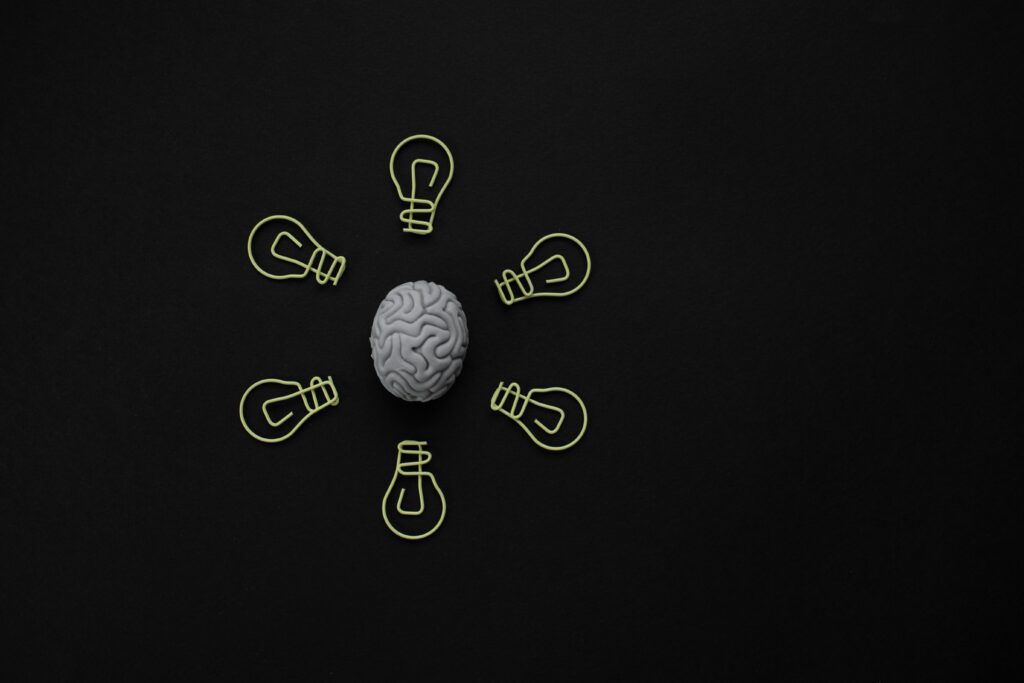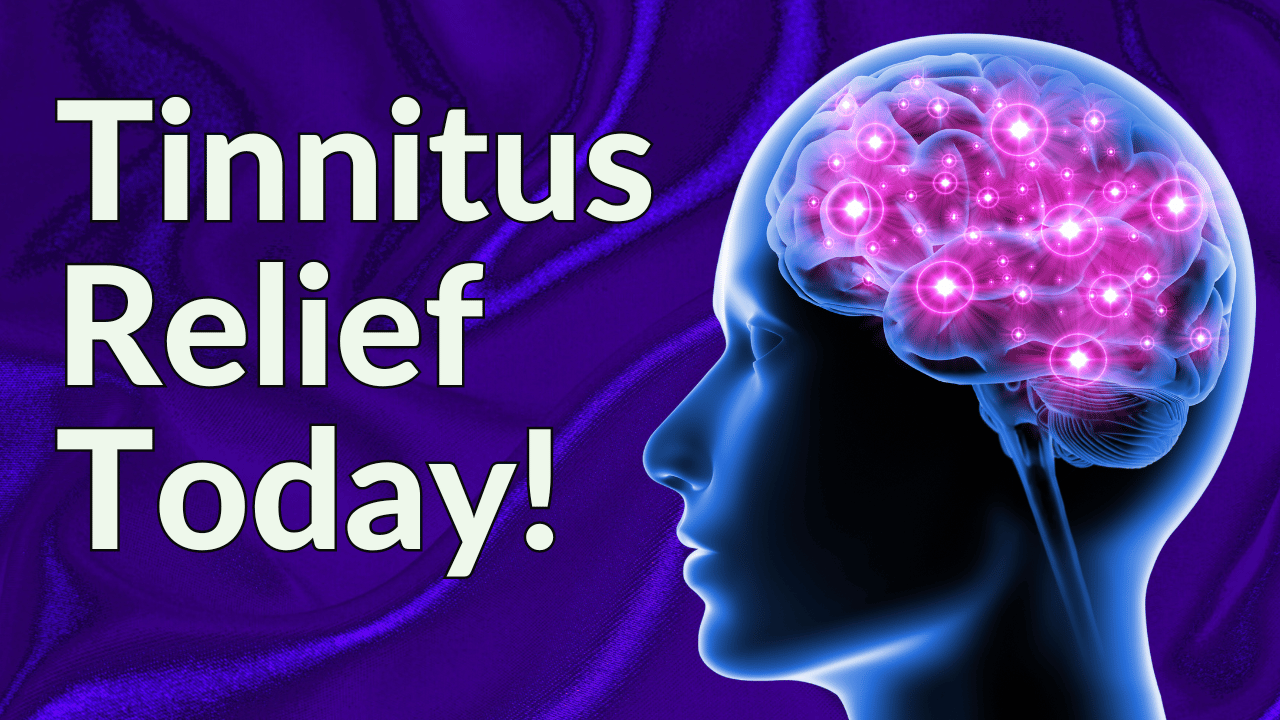Tinnitus affects almost all of us at some point in our lives, but for as many as 20% of people, it becomes a bothersome and persistent problem. There are many different approaches to managing tinnitus, but one of the most promising clinical tools is tinnitus retraining therapy (TRT).
People who use tinnitus retraining therapy can find great success in taking control of the negative reactions they have toward tinnitus and over time, symptoms improve. With patience, TRT can help you turn down tinnitus and be less distracted by that constant ringing in your ears.
What Is Tinnitus?
In a nutshell, tinnitus is the perception of sound when there is no external source. Everyone’s experience with tinnitus is different, but most people “hear” a clicking, hissing, humming, buzzing, or ringing in one or both ears.
Subjective tinnitus, tinnitus that is only perceived by the person experiencing it, is the most common type, but a small percentage of people with tinnitus experience objective tinnitus, which can be heard by others. This is typically related to a problem with blood flow or another ear related condition.
What Is Tinnitus Retraining Therapy?
Tinnitus retraining therapy is a revolutionary approach to tinnitus management that uses a combination of education, counseling and sound therapy to retrain your emotional reactions. Eventually, you’ll no longer be bothered by the sounds of tinnitus – you might not even notice them at all.
The process of becoming less sensitive to a persistent stimulus is called habituation. Habituation can apply to almost anything you hear, see, smell, feel, or experience repeatedly. For example, most people don’t notice the feeling of clothing touching their bodies or scents in their own home.
With tinnitus retraining therapy, your brain learns to ignore the sound of tinnitus and it blends into the background noise. You can achieve habituation through directive counseling and sound therapy. This process is so successful, four out of every five people say they notice tinnitus less after TRT.
What Is The Tinnitus Retraining Therapy Process?
Habituation is not an overnight process and some people may find it easier than others. There’s no hard and fast timeline to tinnitus retraining therapy, but we can break it down into three main parts: evaluation, education, and sound therapy.
Tinnitus Retraining Therapy Step One: Evaluation


Before beginning tinnitus retraining therapy, it is important to have an in-depth medical and audiological evaluation. Understanding your hearing and your ears will help you get the most out of TRT.
In addition, your audiologist will complete some tinnitus-specific tests and questionnaires. The scores from these tests will help determine if you will respond well to tinnitus retraining therapy and will dictate the specifics of how you manage tinnitus. The scores will also serve as your baseline experience with tinnitus so you can monitor your progress with tinnitus retraining therapy. Your audiologist may use questionnaires like the Tinnitus Handicap Inventory and Tinnitus Functional Index.
Tinnitus Retraining Therapy Step Two: Education
Patient counseling is an important part of tinnitus retraining therapy. You will spend a significant portion of the TRT process learning about how your ears work and the mechanisms behind tinnitus. Here are a few topics that are typically covered during TRT counseling.
1. Basic Anatomy of the Auditory System
The first step in tinnitus retraining therapy is understanding the anatomy of the hearing system. Hearing mechanism begins at the outer part of the ear, called pinna, which opens up into the ear canal. The ear canal ends with the eardrum. Behind the eardrum, the system continues into middle ear and contains tiny middle ear bones. These bones play a crucial role in transmitting soundwaves from the eardrum into the inner ear. The inner ear is the snail-shaped hearing organ called the cochlea.
2. The Structure and Function of the Cochlea
The cochlea is filled with fluid, and different parts of the cochlea respond to different pitches. At its base, closest to the middle ear, the cochlea picks up on higher pitches. The very tip of the cochlea responds to low pitched sounds.
Inside, the cochlea has an important membrane called the Basilar membrane. On top of this membrane, the ear has thousands of tiny cells, called hair cells. These hair cells respond when different parts of the Basilar membrane vibrate, depending on the pitch of the sound. Some of the hair cells make connections to the auditory (hearing) nerve, which in turn carries the sound information to our brain. Then, within a fraction of a second, your brain then interprets this information and you perceive sound.
3. Loud Noise, Hair Cell Loss, and Tinnitus



Tinnitus has countless causes, including the natural aging process associated with hearing loss or damage to your auditory system. Even a little exposure to loud noise can cause hair cell loss or damage, leading to the perception of tinnitus. This damage usually occurs at the part of the cochlea that perceives high frequency sounds, but the effect resonates throughout the entire auditory mechanism.
When those high frequency hair cells in your cochlea are unable to send signals to the auditory processing part of your brain, your brain attempts to compensate. Because your cochlea is unable to interpret high pitched sounds, this triggers the typical treble sound of tinnitus. This phenomenon results in a phantom sound (also known as phantom auditory perception).
4. Neurophysiological Model of Sound Perception
There are three parts or layers of the brain that are relevant to the perception of tinnitus: the reptilian brain, the limbic system, and the cerebral cortex.
The innermost part of the brain – the reptilian brain or basal ganglia – includes the brainstem. This part of the brain regulates the most vital functions of the body, such as temperature, heart rate, breathing, and our most basic survival instincts.
The next layer that sits on top of the brainstem is called the limbic system. The limbic system consists of structures including the amygdala, pituitary glands, thalamus and cerebellum. The structures of the limbic system are responsible for processing emotion and memory.
The cerebral cortex is our top layer of the brain, which is what allows us to control our impulses, make long-term plans, and regulate our emotions.
All three layers of the brain define the human existence – and all three layers of the brain are involved in the perception of bothersome or debilitating tinnitus.
6. How Do We Respond To Sound?
The meaning of every sound is a conditioned response. We learn that certain sounds have importance, while other sounds do not. We also automatically label some sounds as positive and others as negative, based on the experiences that are associated with them.
For example, the sound of gentle rain is typically perceived as calming or relaxing. On the other hand, the sound of a hissing snake has a negative connotation because it is perceived as a threat and creates a high-alert response of danger and fear. Objectively, they’re both just noise.
The conditioned responses in both examples trigger both emotional and physical responses. The limbic system drives the emotional connotation to these sounds while the autonomic nervous system (part of the reptilian low brain) triggers a physical response. The sound of soothing rain may be physically relaxing whereas the sound of a hissing snake causes tension and sparks the fight or flight response. It is important to note that in either example the responses are conditioned and automatic, based on the meaning assigned to the sounds which comes from our experiences.
When applying this knowledge to tinnitus retraining therapy, it is possible to recondition the brain to have a different response to tinnitus.
7. Why Does Tinnitus Affect Some People More Than Others?



Physiologically, tinnitus is the result of your ears acting as a filter and not sending the correct sound information to the brain. In the absence of expected sound, the brain creates a phantom response to compensate. The phenomenon of phantom auditory perception is similar to phantom pain in individuals who have lost a limb but continue to experience its pain.
Understanding that tinnitus is part of a phantom auditory experience is crucial to the success of tinnitus retraining therapy. Like associating the sound of hissing snakes to danger, some people assume tinnitus is a sign of some serious medical condition. This can cause severe emotional distress.
In other words, it is the emotional reaction to tinnitus that is bothersome, not the tinnitus itself. The key to tinnitus retraining therapy is learning how to control your reaction.
8. Tinnitus and Tinnitus Retraining Therapy Research
In 2016, a study published in the Journal of American Medical Association (JAMA) of Otolaryngology—Head & Neck explored the prevalence and severity of tinnitus in the United States. This research discovered that approximately 1 in 10 adults experience chronic tinnitus. Furthermore, only a little over 7% of all individuals with noticeable tinnitus reported it as being a “big” or a “very big” problem.
The research also suggests that it’s not the loudness of the tinnitus that creates the bothersome response or a perception of severe tinnitus. In reality, it’s the emotional reaction by the individual that can create this bothersome experience of tinnitus.
A significant contribution to tinnitus research and tinnitus therapy was done by the Tinnitus Research Consortium in the late 1990s. The consortium consisted of twelve scientists tasked with conducting tinnitus research consisting of controlled clinical trials that would aid in the development of effective tinnitus therapy approaches.
One of the Tinnitus Research Consortium’s clinical trials compared the effectiveness of tinnitus retraining therapy to general counseling without a sound therapy component. Although significant improvement in tinnitus severity was reported in both groups, the effects were greater in the tinnitus retraining therapy trial research group.
Tinnitus Retraining Therapy Step Three: Sound Therapy
Finally, after building a stronger understanding of the hearing process and the brain’s ability to moderate its own perceptions, the habituation process can begin. The process of habituation has two main components: habituation to the emotional responses and habituation to the perception of tinnitus.
Directive counseling, which includes the education component of TRT, is used to alleviate fears and anxiety surrounding the perception of tinnitus. Directive counseling helps to reduce and eventually end the negative emotions associated with tinnitus. Soon, the symptoms will be relieved.
Habituation to the emotional reactions to tinnitus can be referred to as the psychological component of tinnitus retraining therapy. In addition to directive counseling, learning about habituation and developing awareness of the internal mind help strengthen your resilience to tinnitus. Methods that have proven to be successful with the psychological aspect of tinnitus retraining therapy involve habituation, mindfulness, cognitive behavioral techniques, and some forms of meditation.
Habituation to the perception of tinnitus is done with the use of what’s called “sound therapy,” another important component of tinnitus retraining therapy. The goal of perception habituation via sound therapy is to render tinnitus unnoticeable majority of the time.
Sound Therapy Via Environmental Sound Enrichment
For individuals with mildly bothersome tinnitus sound therapy can be accomplished using a distracting external sound. This means that sounds in the individual’s environment are used to achieve partial tinnitus masking.
Avoiding silence and creating a sound rich environment is always recommended to tinnitus patients as part of their sound therapy. This on its own can lead to significant improvement in reducing tinnitus severity. For example, you can use a fan when trying to fall asleep or a white noise machine throughout your day. Tinnitus patients commonly report difficulties tolerating certain situations because they are very quiet. With little or no background noise, all they hear is the tinnitus signal. Fortunately, you can use sound therapy intelligently in your day-to-day life to improve those specific situations that really frustrate you by incorporating various background sounds.
Choosing a good sound source is important to effective sound therapy. Use neutral sounds that do not evoke any emotions – positive or negative.
Sound Therapy Via Wearable Sound Generators
Some other options for sound therapy involve wearing small devices on your ears to play relaxing, calming sounds into your ears throughout the day. Those are called ear level noise generators. A sound generator can be a great option for sound therapy to help reduce tinnitus perception.
Sound Therapy Via Hearing Aids
Another way to have a sound rich environment for tinnitus management is to use modern hearing devices or hearing aids, which can serve as a form of sound therapy. This is especially useful if you have hearing loss. Remember, tinnitus is an internal sound perception, so even if you are experiencing severe hearing loss, you can perceive the sound of tinnitus loud and clear. Using hearing aids can amplify external sounds that you can’t normally hear, which provides natural tinnitus masking. Also, wearing hearing aids can give an immediate sensation of relief because they stimulate your auditory system.
Regardless of your level of hearing loss, you should have a hearing evaluation done by an audiologist. Even for people with mild hearing loss, hearing aids can greatly improve communication and tinnitus management.
How Effective Is Tinnitus Retraining Therapy In Treating Tinnitus?
The reported success rate of tinnitus retraining therapy is over 80%. The best way to measure the effectiveness of tinnitus retraining therapy is by retaking the questionnaires presented in the evaluation stage of TRT and comparing your scores to your baseline.
An important aspect of tinnitus retraining therapy is the individualized nature of counseling sessions. Everyone’s lifestyle is individual and tinnitus affects everyone in unique ways. One-on-one tinnitus retraining directive counseling sessions allow the audiologist to ask questions about your history and relate every important aspect of tinnitus back to you and your life.
Tinnitus Retraining Therapy Cost
The cost of tinnitus retraining therapy depends on how many sessions your audiologist recommends and whether or not you need conventional sound generators or hearing aids to aid your treatment. Depending on your provider, one TRT session may cost between $150-$300. For comparison, a pair of hearing aids can cost $3,000-$6,000.
Tinnitus retraining therapy is typically performed over a series of appointments. Although typically tinnitus retraining therapy requires several counseling sessions, even the first directive counseling may give you a great starting point on your path to tinnitus relief.
Remember, take your tinnitus journey one step at a time.
Next Step: Book Free Consultation
- 75% of patients reduced their tinnitus within three months after following our recommendations.
- "I feel like Treble Health literally gave me my life back." - Randy S. (verified customer)
- Join thousands of people who have reduced their tinnitus after scheduling a free consultation.
References
https://www.rehab.research.va.gov/jour/03/40/2/PDF/henry.pdf
https://www.tinnitus.org/handout2%20TRT_oct2002.pdf
https://www.sciencedirect.com/science/article/abs/pii/S0378595515001252
https://www.sciencedirect.com/science/article/abs/pii/S0378595515001033
https://jamanetwork.com/journals/jamaotolaryngology/fullarticle/2533660


















